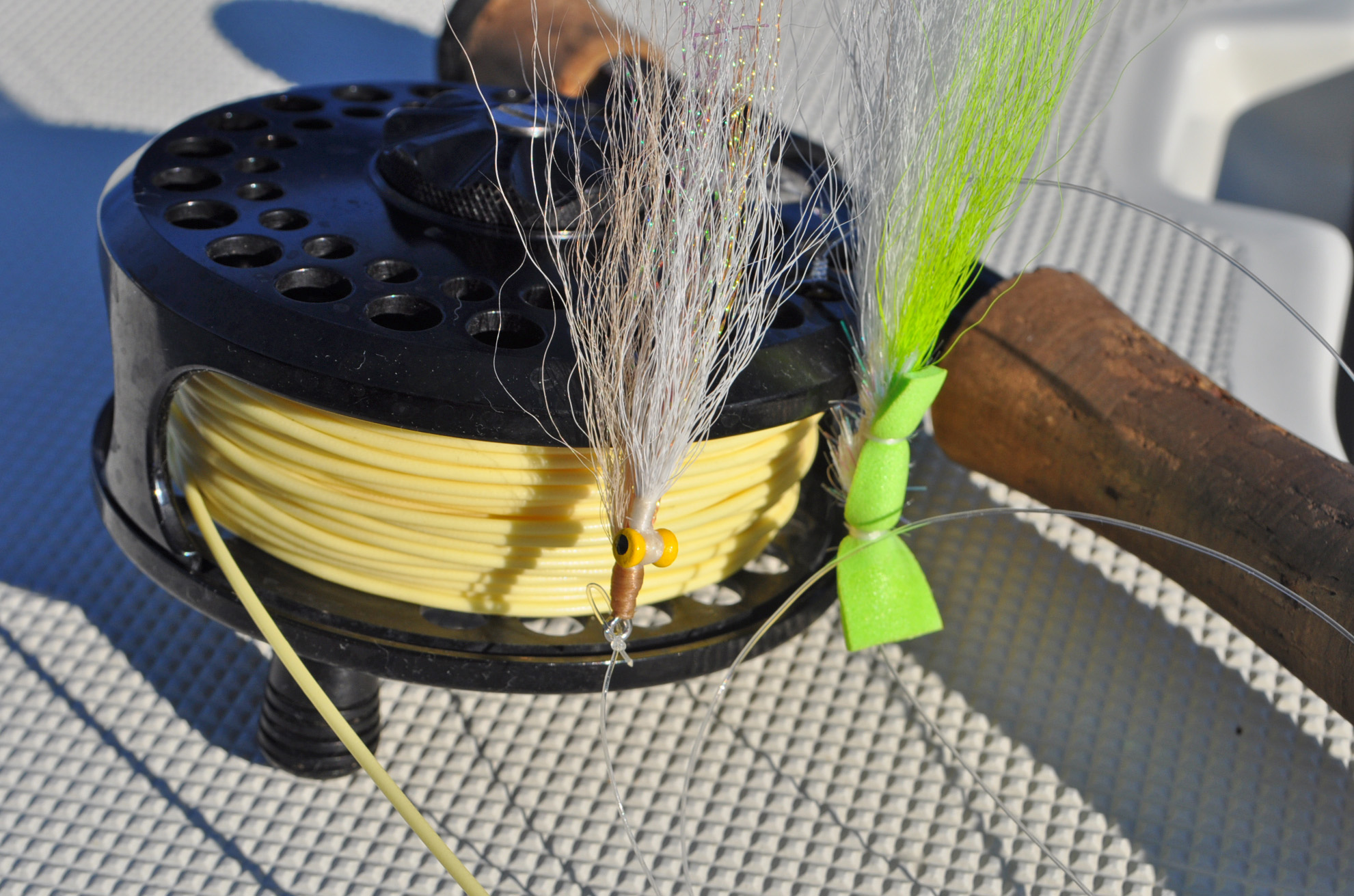September 27, 2016
By Mike Conner
Double fly rigs for fishing the surface and the bottom.
 Sinking Clouser minnow, at left, fished behind a bright surface Gurgler fly is an excellent attractor setup.
Sinking Clouser minnow, at left, fished behind a bright surface Gurgler fly is an excellent attractor setup.
Only the most purist of fly fishers would do whatever it takes to increase the chance of a hookup. As in (shhhh...) adding scent to a fly!
Blasphemy, huh? Well, how about fishing two flies at once? More acceptable? Then read on. It's not at all foreign to many freshwater stream and river trout guys and gals. Ever seen some of the elaborate dropper nymph rigs being used on fast waters? They look like necklaces, but catch fish when more traditional approaches fail.
I have long used tandem rigs, both in fresh and salt water. If you've ever fished topwater poppers and bugs and dealt with half-hearted strikes, it may have been during cold weather or when the surface was flat-calm under a high sun. That's when a dropper fly can seal the deal for you. The popper becomes the equal of the deadly popping cork that spin anglers use in tandem with a live shrimp.
I've enjoyed great results on bluegills with a No. 6 or 8 popper and a no. 8 Woolly Bugger, tied about 2 feet below the popper with 8-pound test line. The shorter the leader, the easier the tandem will cast. Some of the biggest slabs shy from a popper, but are suckers for the Bugger. Tie the dropper bug leader to the bend of your hook. It won't readily foul.
For largemouth bass, go with a bigger bug (deer hair bugs are ideal), the same short leader, and tie on a bigger Bugger or perhaps a streamer or Clouser Minnow dressed with bead chain eyes. It will sink plenty fast, and won't “drown” your topwater bug. By the way, don't be shocked should you score a double, a bass on both flies. Happens a lot around schooled up fish.
In the salt, the tandem is terrific for spotted seatrout, Spanish macks and snook around potholes or over any grassflat. I once fished an oyster bar near Everglades City where slot-sized reds were falling all over my Dahlberg Diver, yet as reds tend to do (with that underslung mouth) most missed the Diver repeatedly. I tied a weighted Bendback to the bend of the hook and landed about 10 in a row.
It's a killer for bigger trout. The big specks can be wary and shy from the popper, flashing or shadowing it, or smacking it with their jaws clenched. A Clouser Minnow solves things, but my go-to dropper fly is a Sea-Ducer in a shrimpy color. It undulates and pulsates as you work the popper on top aggressively.
This tandem must be fished with a floating line for obvious reasons.
Bottom Tandem
Another cool trick is tandem rigging with a sinking fly as the “anchor” of the rig. It's essentially the aforementioned tandem in reverse. If you're in a situation where fish are tight against bottom, be it sand, shell or grass, you can “float” a second fly above the main fly. A perfect example is a Clouser Minnow as the anchor fly and a buoyant pattern such as a Sea-Ducer or a deer hair mullet pattern as the tag fly.
The Clouser will bounce across bottom, or fish through the grass, with the tag fly suspended above it. I am convinced that the fish “feel” the bottom fly and nail the top fly more times than not. My favorite bottom tandem rig is the Clouser with medium- size lead eyes, and a Dahlberg Diver as the tag fly. “Grease” the Diver a bit with silicone floatant and it will definitely suspend for longer periods before becoming waterlogged.
A slow-sinking line is ideal for fishing this tandem, though a floater can suffice in water four feet deep or less.
Casting Adjustments
Casting any tandem fly rig seems ungainly at first. The key is to keep the leader between flies short. A 2-foot piece is way easier to cast than a 4-footer. You might also consider using a stiff mono to decrease the chance of fouling.
Rather than striving for tight loops, open up the casting stroke a bit to create wider loops. You'll get plenty of distance, and you'll greatly decrease the chance of striking your rod blank with either fly. I also cast more side-armed with tandems. Keeps that rig away from your noggin! Also, pick up a beefier rod when practicable. An 8-weight rather than a 7-can make a big difference. FS
First published Florida Sportsman January 2016

